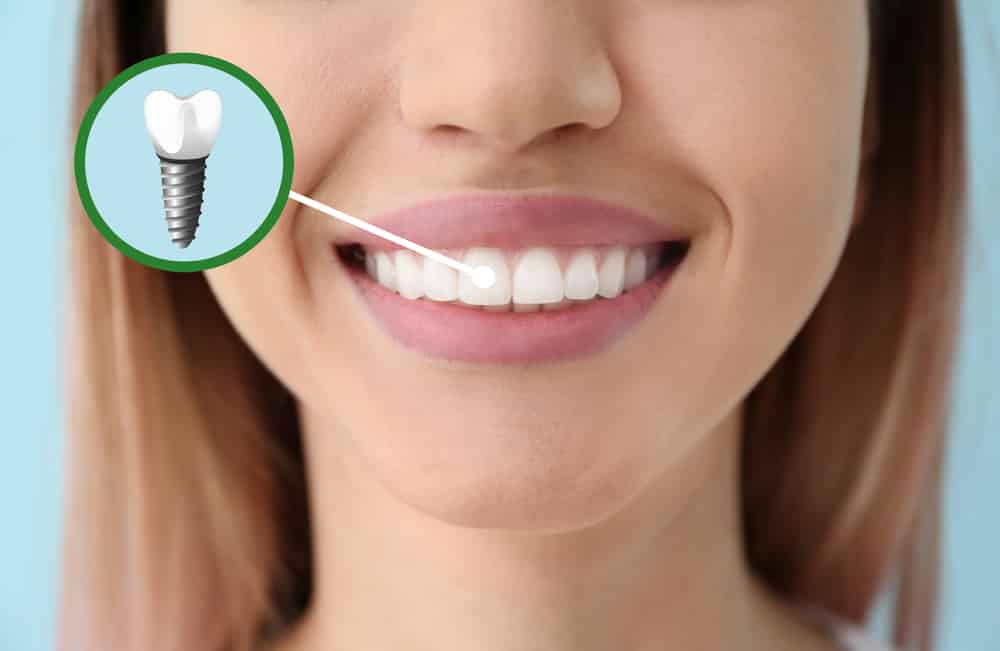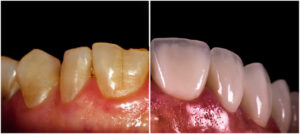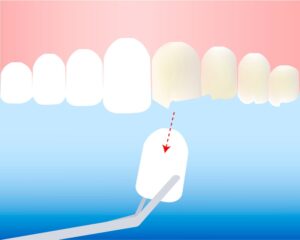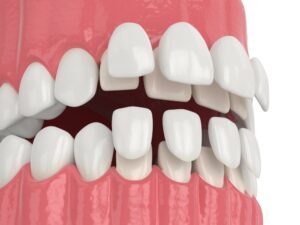In this article, we will answer in detail the question of what is the risk of dental implants. It is a frequent question from patients, and that is why it is better to clarify it right now: Dental implants, despite being a complex treatment (which even involves surgery), do not have more risk than any other dental procedure. In fact, the risks are very small when compared to the advantages, which we will also examine in this article. At the end, we will give you some tips to avoid or minimize any risk from dental implants.
The great efficacy of dental implants (which have revolutionized aesthetic and functional dentistry) is evident in the enormous accumulation of studies and research that exist in this regard. For this reason, throughout this article, we will be giving you numerous links to research, reports, articles, and scientific studies, so that you can expand on the topics that are most important to you. Stay with us and learn all about this interesting topic.
Miami Perfect Smile: the best prices for dental implants in Miami
Before continuing with the article, if you are looking for dental implant treatment in Miami , you have just come to the right place. We offer you everything you need to make your smile look like you always dreamed of: perfect but natural, radiant but elegant, renewed but yours. We have dental veneers treatments, smile design, dental implants, and others. By following the link we just inserted, you can access our data to contact us or schedule your first appointment and find out all the details.
Our treatments are carried out with the best quality materials and state-of-the-art technology, to make your smile look perfectly aesthetic and natural. Your well-being is our goal. In our facilities, you will receive the careful and specialized treatment that you deserve. Review the opinions of our patients and check their satisfaction with our treatments. Pleased patients are our best letter of introduction.

At Miami Perfect Smile we accept all types of insurance and plans with which the patient is covered. And something very important: our prices are very reasonable. You can investigate, and you will see the excellent relationship between quality and the price that we offer. It is worth noting that many people travel to Florida to undergo dental implant treatment in Miami. Despite the travel expenses, our prices are still more reasonable than those in other States.
What are implants and what types of dental implants exist
Dental implants are fixations that are surgically placed in the maxillary (upper) or mandibular (lower) bones, with the aim of replacing lost tooth roots. Implants are literally replacements for tooth roots, so they create a new root so that a dental prosthesis can be placed where it could not be put before.
Currently, the implant is inserted into the bone mainly by threading, but there are also implants that are placed by cementation. Once the implant is placed, it takes several weeks (from 8 to 16) before placing the dental prosthesis or crown on it. Strictly speaking, the implant is only the root placed by surgery. But the set of root and dental prosthesis is often called a dental implant.
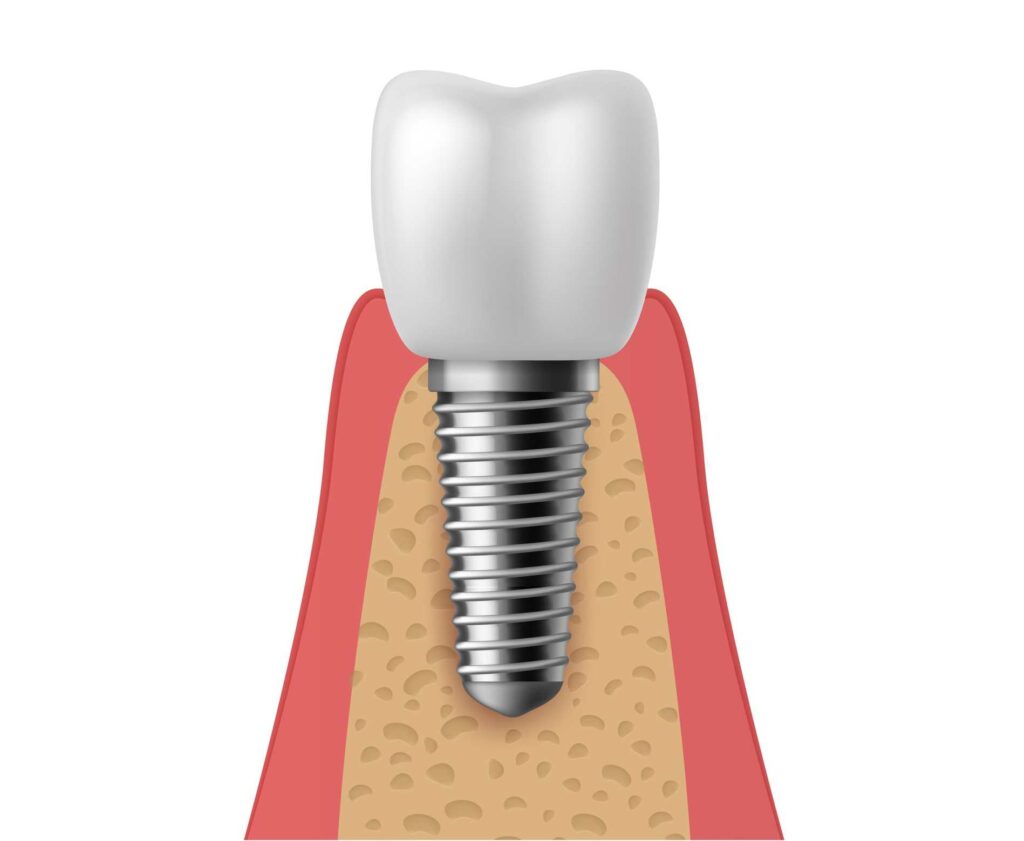
More details: You can read more general details about dental implants in this Mayo Clinic article. If you want to know the whole history of dental implants, you can read these two articles, the first published in Research Gate and the second in Frontiers: History of Dental Implants and A Brief Review on the evolution of Metallic Dental Implants: History, Design, and Application.
Types of dental implants
There are basically two types of dental implants, from the point of view of the material with which they are manufactured:
- Metallic: They are almost always made of pure titanium or titanium alloys with other metals. Titanium metal implants are characterized by their high resistance combined with lightness, low density, and elegant finish. They achieve very good osseointegration (integration with the bone) once they are implanted in the maxilla or mandible.
- Ceramic: They are made with ceramic materials or with the so-called “transition metals”, which are remarkably hard and light, as well as hypoallergenic. Specifically, they are made of zirconium (zirconium), hydroxyapatite, or monocrystalline aluminum oxide. More than osseointegration, they achieve what is called bio integration, which is a much more complete integration into human bone tissue.
Both materials used in the manufacture of dental implants, metal (titanium) and ceramic (zirconium) have the quality of being bioinert. In other words, they do not cause secondary reactions when integrated into the body of the vast majority of human beings. If you are interested in delving into the topic of osseointegration and biointegration, you can read these medical articles: Comparison of osseointegration in areas grafted with different osteoconductive biomaterials . preclinical study Y The Influence of Haematogenous Bone Marrow on the Early Osseointegration of a Titanium Implant which Penetrates the Endosteum .
Despite the inert quality of both titanium and zirconium, it is extremely important to have these two varieties of materials for the manufacture of dental implants. Patients with allergies to metals or titanium should use ceramic dental implants, especially zirconium. This avoids long-term complications, as well as prevents problems of lack of osseointegration due to allergy or implant failure, in the sense that the body is unable to integrate or assimilate the implant material.
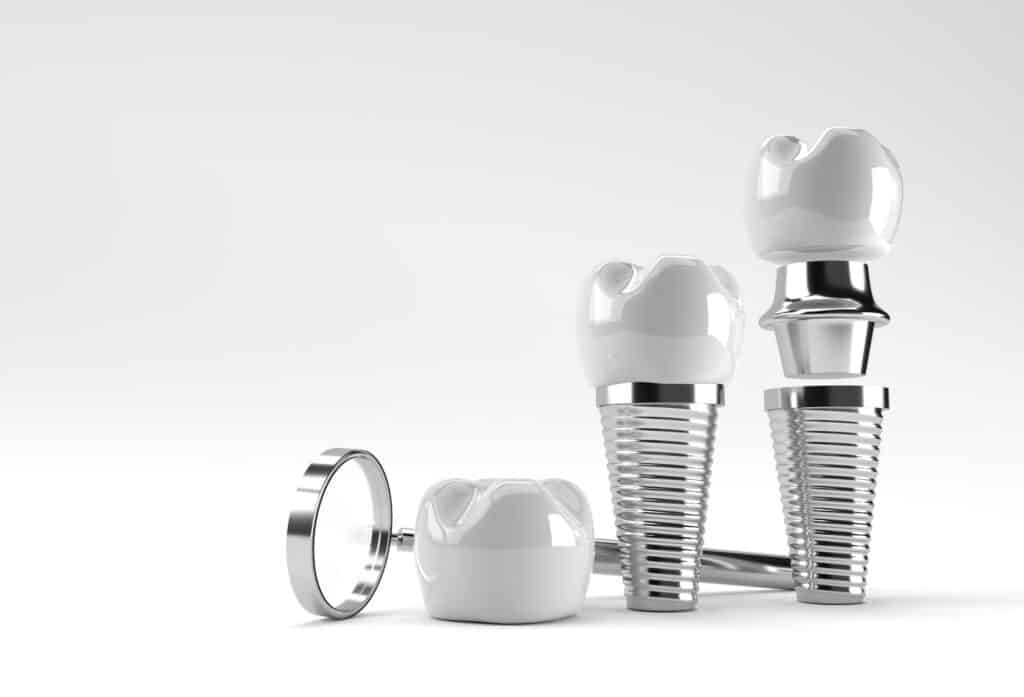
If you are interested in the subject of negative reactions to titanium in certain patients, you can read this article, entitled Emerging titanium surface modifications : The war against polymicrobial infections on dental implants .
Other types of dental implants
In this article, we will mainly analyze the types of intraosseous or endosseous dental implants. These are the ones that are placed in the patient’s maxillary or mandibular bone by surgical intervention, and are the most widely used types of dental implants today. But the truth is that there are numerous other types of dental implants.
The types of dental implants can also be grouped from other points of view, in addition to their manufacturing material. For example:
- From the point of view of its implantation site (intraosseous or endosseous, juxtaosseous, subperiosteal or ISP, fibrointegrated or subcrestal ).
- From the point of view of its shape (conical or cylindrical).
- From the point of view of your connection (internal connection or external connection).
- From the point of view of its permanence (fixed or removable).
- From the point of view of the number of implants (simple, all on four and all on six ).
- From the point of view of its way of connecting the implant to the bone (screwed or cemented).
- Among others.

Dental implants: pros and cons (to better understand)
Perhaps the best approach to understanding this topic of what is the risk of dental implants is the “pros and cons” approach. Seeing only the cons would detract from the perspective and veracity of the content, as much as seeing only the advantages. And since this article is about the risks of dental implants, we will start with the cons, disadvantages and risks. We will detail the advantages later.
We will analyze everything briefly, because space does not give for more. If you want to study, in much more detail, the complications of dental implants, read this scientific article published in Research Gate: Complication of dental implants.
1 – Risks of dental implants
We are going to talk about what is the risk of dental implants because this is the place to talk about it. However, as you will see, the possibility of these things that we will now list happening is minimal. Most of these complications occur in a tiny percentage of cases. When a person suffers from certain diseases or has a certain type of tooth that increases the degree of risk, dental implants are avoided. The treatment begins by studying each case very well, precisely to avoid or minimize complications such as the ones we will see below.
a) Recurrent pain
It is quite normal that, after a surgical procedure such as the placement of dental implants (always invasive to some degree), the patient may feel pain. Postoperatively, and generally in the short term, this may be unavoidable and can be managed with analgesics. However, if the pain recurs frequently in the long term, or even becomes chronic, this is a sign that this pain should be reported to the dentist.
Chronic or recurrent pain can occur when the implant is placed too close to the dental nerve. In these cases, especially when there is infection and inflammation of the tissue around the implant, the alveolar nerve can be affected. This is solved with the prescription of appropriate antibiotics, or even with antibiotics administered prophylactically.
In this article you can read details about the prophylactic use of antibiotics in dental implant surgeries: Antibiotic prophylaxis patterns of Finnish dentists performing dental implant surgery .

b) The dental implant touches the nerve and injures it
When a dental implant unexpectedly touches the nerve, that has consequences. Lower dental nerve injuries (due to miscalculation during surgical planning) have been documented as one of the most common long-term complications after dental implant placement. Errors made by the staff who placed the implants may have been:
- Not having calculated the path of the implant well during planning, so that it would not run into a nerve.
- Put too much pressure on the nerve during the intervention.
- Installing the implants excessively close to the dental nerve.
The direct consequence of a dental implant touching a dental nerve is what is called “paraesthesia”, that is, an abnormal sensation in the skin due to problems in the nervous or circulatory system. It is quite normal to feel numbness in the lip after the placement of an implant. But now we are referring to when the symptoms go beyond normal.
When paresthesia is due to a dental implant getting too close to and touching the nerve, discomfort is experienced in the lip, chin, or jaw, such as tingling, numbness, burning, itching, prickling, burning, buzzing, or unexplained cold. In addition, dryness of the oral mucosa or reduced saliva production may be experienced.
The basic solution for paresthesia of the lip, chin or jaw caused by the contact of the dental implant with the nerve, is to reduce the inflammation (if the inflammation is the cause of the proximity between the nerve and the implant). However, if the paresthesia does not cease when the inflammation subsides, the possibility of removing the implant should be considered, and probably replacing it with a shorter implant. If the problem persists beyond this first solution, other solutions must be sought, perhaps related to radiology or surgery. There are also treatments based on the consumption of vitamin B complex, especially vitamin B12 (cyanocobalamin).
c) Sinusitis becomes chronic
If peri-implantitis (inflammation of the tissue in contact with the implant) occurs at the maxillary level, this can lead to rhinitis or chronic sinusitis due to proximity. As in these cases it will be difficult for the patient to express the exact location of the pain (the subjective experience of the inflammation makes it difficult to localize the pain well), the diagnosis must be made in the clinic by radiography.
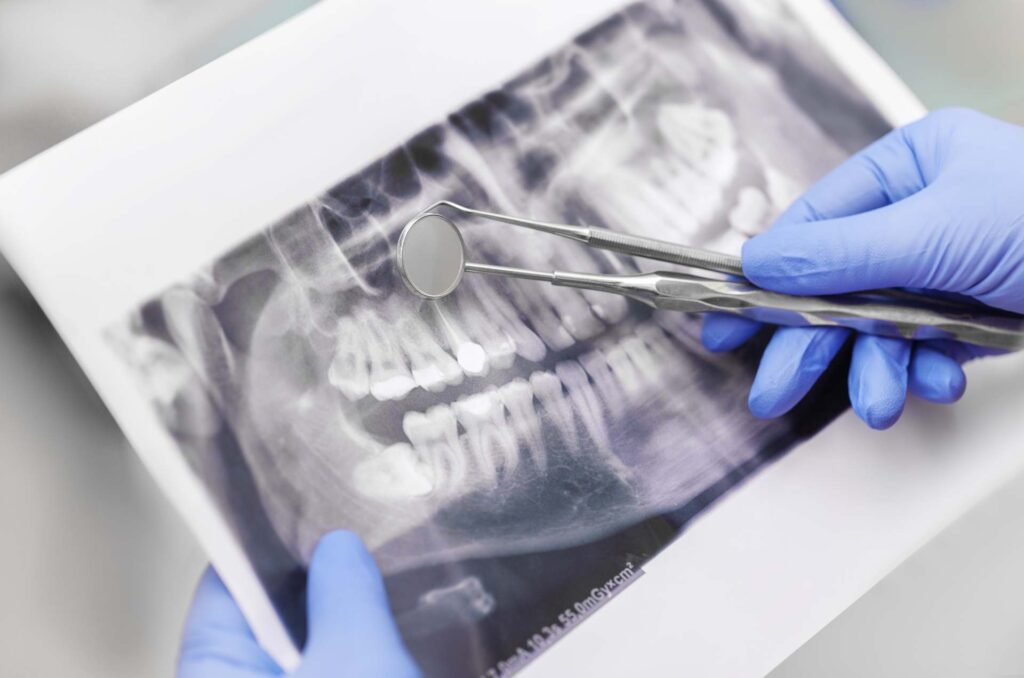
d) Gum disorders
Gum disorders are usually related to gingival necrosis (death of gum tissue). They can also result from the implant thread cap becoming loose or dislodged. In these cases, the implant, in contact with the gingival tissue, can cause peri-implantitis , and if it is not detected in time, the condition can worsen.
This inflammation must be reduced as soon as possible, so that the implant does not lose its support from the bone. So that dental implants do not cause long-term complications due to gum disorders, it is necessary to attend the appointments that the doctor has scheduled, even if the patient does not feel that they have symptoms and feel that something is wrong.
In the following link you can find more details about the treatments (surgical and non-surgical) for peri-implantitis: Peri-Implantitis: Surgical vs Non- Surgical Treatment .
e) Implant fracture
Fracture of a dental implant is extremely rare (due to the high resistance of the materials and to the fact that they are protected by the bone). However, in a very small percentage of cases, fracture can occur.
For example, if the patient has a history of bruxism (unconscious habit of grinding the teeth or compressing the jaws), the implants could fracture due to excessive compression of the jaws. That is why patients with bruxism are sometimes advised not to choose to have implants placed, or at least not before they have overcome bruxism.
Long-term implant fracture can also occur due to fatigue or similar disorders. It can occur especially in implants placed in the back of the mouth, especially if there are distal extensions. Without a doubt, it requires that the patient go to the dental clinic.
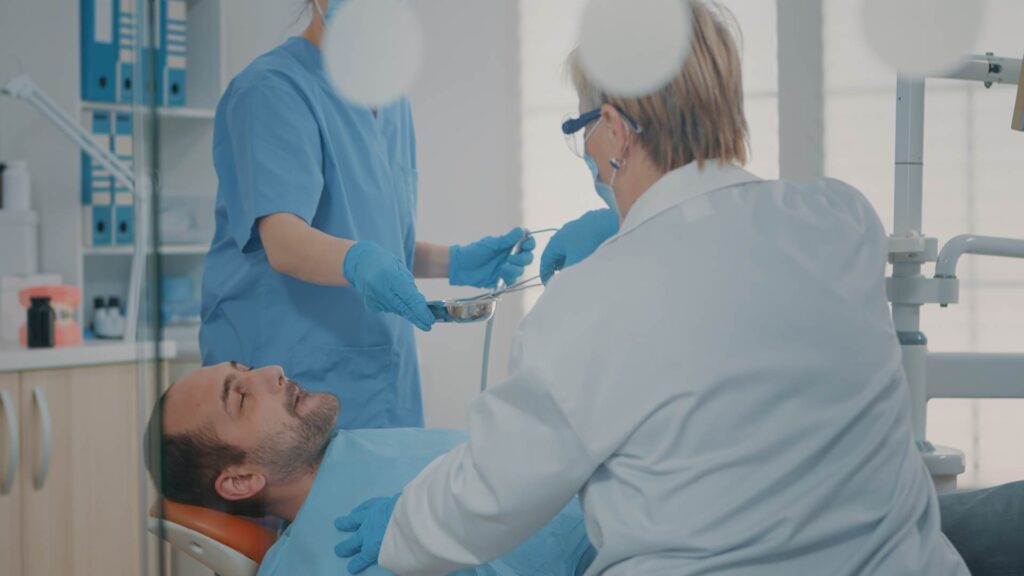
f) Can age or sex be a risk?
Although complications occur in a tiny percentage of cases, it is always advisable to understand in which cases they occur, in order to establish risk groups. The most generalized scientific criterion is that, except in specific cases of certain chronic diseases (we will list them in a later section), the risks of dental implants affect all people equally, regardless of age or sex.
Despite this, there is research that suggests differences in this regard. There is a study that suggests a higher percentage of complications of dental implants in age groups from 33 to 50 years, and in male patients more than female. These are only indications, but they must be taken into account.
g) Implant failure
The term “implant failure” is reserved for the extreme complication of a dental implant. It is a phenomenon that, if it occurs, occurs in the long term, and consists of the implant failing to fix itself in the maxillary or mandibular bone. This occurs in a very small percentage of cases (less than 3%), and does not imply any disorder in the bone or cause peri-implantitis. What happens in these cases is that the implant did not achieve osseointegration, or what amounts to the same thing: it failed to fix itself to the bone. Even these cases can have a solution if you go to the dental clinic on time.
2 – Some (non-clinical) disadvantages of dental implants
Above we saw the risks of dental implants from the clinical, anatomical and physiological point of view. In this section we will briefly see some disadvantages of dental implants that are not exactly clinical, that is, some negative aspects from other points of view (personal, contextual, economic, etc.)
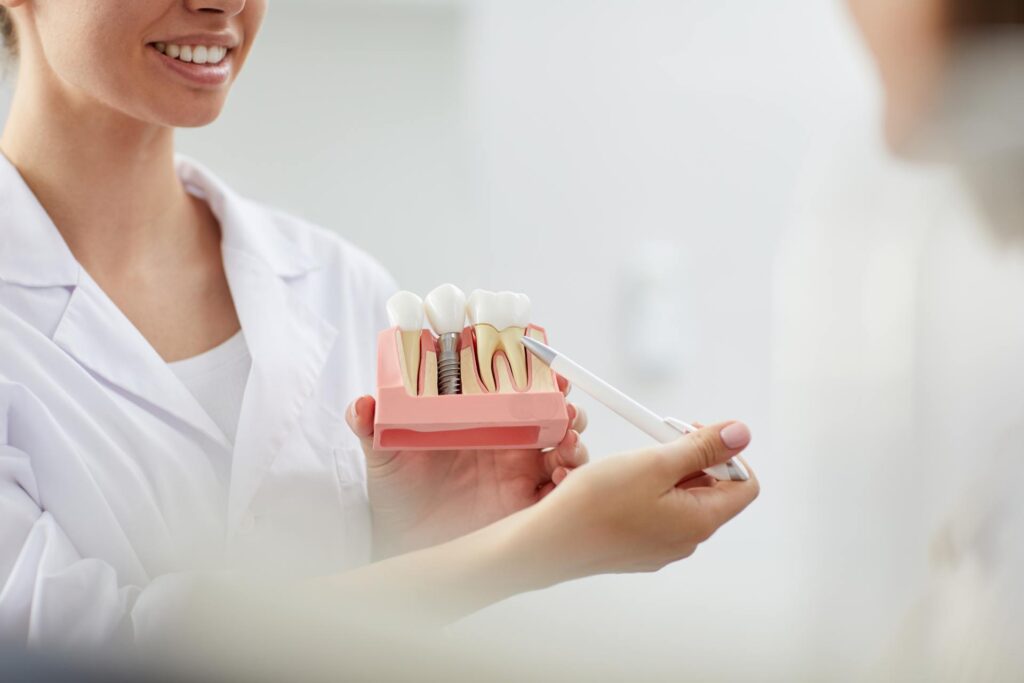
a) Not all people can use dental implants
Virtually everyone can receive dental implant treatment, regardless of gender or even age. But there are temporary or permanent exceptions. For example: pregnant women cannot receive the treatment while pregnant, patients with poor oral hygiene, or people who smoke (they must give up cigarettes permanently or for a long time).
Likewise, dental implants are not recommended for people suffering from certain diseases that hinder healing or osseointegration (diabetes among others), or for people with little jaw bone (research is being carried out to overcome this limitation). People allergic to metals or titanium can opt for zirconium dental implants.
b) It is an expensive treatment in all senses
Without a doubt, dental implant treatments are among the most expensive dental procedures. Not only is the procedure itself expensive (since it is surgery), but also the studies and consultations before and after, not to mention the preparation that must be given to the mouth and teeth (extractions, cleanings, etc.) Possibly not available to everyone, despite the fact that it is probably the most successful tooth restoration procedure today.
If you are interested in the topic of the cost/benefit ratio of dental implants, take a look at this study: Cost-benefit assessment of dental implants .
c) Medical insurance does not usually cover dental implants
It is very rare that medical insurance (whether private insurance or not) covers dental implant treatments. And if they are covered, the cost of insurance may be so high that it is not worth paying. In fact, Consumer Reports magazine has a symptomatic article titled Think Twice Before buying Private Dental Insurance , whose reading we recommend. There it is commented that, according to the National Association of Dental Plans (NADP), 1 in 4 Americans does not have dental insurance, and in the case of people over 65, half do not have coverage.
In the case of dental plans, most US states have enacted laws that prevent dental plans from necessarily covering dental implant procedures and other cosmetic dentistry. These laws are called Non-Covered Services. You can learn details about this topic by reading this NADP article: What You need to know About “Non-Covered Services” .
3 – Advantages of dental implants
The treatment to place dental implants begins with a detailed and casuistic study of the patient, both his medical history and his current state in physical and oral terms. What is sought with this is to evaluate if the person is suitable to use implants, as well as to decide what type of implants are best for them, and the best procedure to put them through. All this means that the specialized staff seeks by all means to eliminate or minimize any type of risk, and that everything has advantages and benefits for the patient.
a) Restored teeth and smile
Dental implants help edentulous patients recover missing teeth. This implies a great gain in terms of aesthetics and oral functionality. The person recovers the ability to chew well, to smile without difficulties with their appearance, in addition to being able to speak normally again. The face recovers its natural features, without the changes that occur when there is dental loss.
b) It is a highly aesthetic dental procedure
Dental implants are designed so that they are not noticeable at all, and so that the person feels comfortable wearing them. The materials of the dental crowns that are placed on the implants, every day better emulate the natural dental enamel, and sometimes surpass it in resistance, hygiene and durability. To this we must add that the implants manage to be totally invisible, thanks to the fact that they are anchored to the mandibular or maxillary bone and are covered by the gum (as long as they are endosseous dental implants).

c) Affecting adjacent teeth is not required
It is a treatment that can be performed on individual teeth. When it comes to a single implant, it is not necessary to affect adjacent or neighboring teeth. In this, dental implants are far superior to other procedures, such as most dental veneers (which require wear or devitalization of adjacent teeth), or removable dentures (which cause bone wear).
d) Once it is done, it is practically permanent
In general, dental implants are a permanent and very durable treatment. They are comfortable for those who wear them, since they do not require you to take them off and put them on. The high-quality and durable materials used to manufacture the implants (basically titanium or zirconium) contribute to this durability.
e) Completely performed in the clinic
It is a procedure that is performed entirely in the dental clinic in the hands of specialists. All the steps of the treatment (study and previous evaluation, extraction of damaged teeth, placement of implants through surgical intervention, and postoperative care) are carried out under professional supervision. The patient is not exposed to the risks that may be incurred by applying other methods of cosmetic dentistry, which include steps that must be taken alone at home.
f) They do not require excessive care
As we mentioned above, the materials with which dental implants are manufactured are biocompatible and bioinert. They do not cause secondary reactions and are highly hygienic. They do not trigger chemical reactions in the mouth, and do not require excessive care. It is enough to maintain normal hygiene (as with natural teeth), and put into practice some other special advice that the dentist has given.

g) A fairly quick and painless procedure
Unlike other dental treatments, the placement of implants is performed under local anesthesia, which avoids any type of pain. And once placed and assimilated by the body, dental implants look virtually identical to natural teeth. Surgery doesn’t take long, and research is now being done to make the operation even easier, shorter, and less invasive than it already is.
You can read this research report if you want to learn about new methods of dental implants: Bone stress and damage distributions during dental implant insertion : a novel dynamic FEM analysis . You can dig deeper by reading these other articles: Nanotechnology in dental implants , The Race for the Surface: Advanced materials for Dental Implants , and
h) Age is not an impediment
Dental implants can be placed in patients of any age. Except for reasons of dental loss due to trauma, it is rare that this is used in minor patients. But apart from this particularity, at any stage of life that is required, dental implants can be placed. Age is not an impediment to receiving dental implant treatments.
Even in geriatric age, the procedure can be performed, without involving any risk other than any other simple surgical intervention. Studies have been carried out that show that patients over 70 years of age rarely resort to dental implant treatments, but this attitude is due to a lack of information.
When seniors receive quality information from sources they trust, they turn more to dental implant treatments. Read the Next study Yes you want to know more details on East Topic : Facilitators and barriers influencing the readiness to receive dental implants in a geriatric institutionalized population-A randomized non-invasive study .
Six tips to minimize any risk from dental implants
When dental implants are well placed and osseointegrate well, you just have to continue with the normal care habits that you had with natural teeth (perhaps adding a few more). For example, in general, if you weren’t in the habit of visiting the dentist once a year, maybe now you should start. Here are some other care tips to avoid risks with dental implants.
1) Follow the doctor’s instructions
Unquestionably, all dental implant treatments have many things in common. However, it is also true that each treatment is different, adapted to a specific person. For this reason, it is best to follow the instructions given by the doctor to the letter, which in addition to generic advice will include individual advice. In this way, in the shortest possible time you will not even remember that you are wearing implants, thanks to how well they will have integrated into the bone.
2) Take postoperative precautions
The following, check with your doctor before putting it into practice. During the first days after the intervention, it is best to eat only soft or liquid foods, and that are at room temperature, or even cold. It is better not to eat hot food but rather at room temperature during the first 6 weeks after the surgical intervention to place the implants.
3) Maintain normal dental hygiene… and beyond
Maintaining proper dental hygiene is very important to keep dental implants healthy and avoid long-term complications, such as infections, inflammation or implant failure. In fact, as we have already mentioned, when dentists notice a special lack of oral hygiene in the patient, that is a reason to discourage the use of dental implants or recommend better dental hygiene.

4) Avoid tobacco, cigarettes and alcohol
Tobacco and alcohol are destructive substances for health. This is especially true with dentures. These substances, consumed by habit or vice, degenerate the teeth, and in the long run can destroy them. Smoking is another of the reasons for which dentists may discourage certain patients from using dental implants.
If you are interested in the topic of the risk of dental implants in relation to smoking or smoking, take a look at these articles:
- Levels of smoking and dental implants failure: A systematic review and meta-analysis
- Smoking interferes with the prognosis of dental implant treatment: a systematic review and meta-analysis
- Increasing Levels of Smoking may Increase the Relative Risk of Dental Implant Failure
5) Give up harmful dental habits (bruxism, onychophagia…)
It is best to abandon habits that are considered destructive to the teeth, as they will be more destructive to the implants. We refer to habits such as biting or biting nails (onychophagia), bruxism (discussed above), biting hard objects such as pencils, pens, wood or plastic, using teeth as substitutes for tools (stripping cables, opening containers, holding objects to do work on them, loosen nuts, etc.) All this is harmful to natural teeth, and it is even more so for dental implants.
6) Do not eat hard or sticky foods
Some foods are too hard or sticky and can harm dental implants. As far as possible you should avoid eating these foods, or at least moderate their consumption. Ultimately, if you can’t help but chew them carefully.
Some of these foods are: roasted seeds, some nuts, hard nougats, some types of cookies or stale bread sticks, fried pork skin (whether crispy or not), some types of snacks or sweets, etc. Especially avoid biting bones or ice cubes, because this practice is harmful to dental implants.
